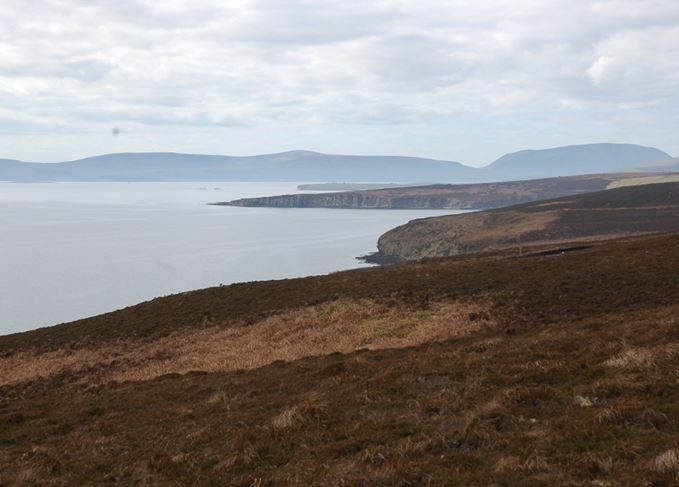We all know how peat smells and tastes, but ever stop to think about where that flavour comes from? In the run-up to this year’s Feis Ile (20-28 May), Dave Broom explores the impact of peat terroir.

It’s funny what we take for granted. Peat, for example. We know what its smell is like, what effect it has on a whisky and on our minds – some of us run a mile, others are drawn towards it, blinded by smoky love. It’s still just peat, though, isn’t it? It’s all to do with what happens in the kiln, in the distillery. The raw material is of less concern.
Yet how much do we really know about peat? The answer is less than you imagine. For starters, it isn’t Scottish – or Celtic. Much of northern Europe from Scotland to Siberia has peat, as does Washington State and Canada. There’s peat in Rwanda, New Zealand and Australia.
It exists because of specific climatic and geological conditions; the dreich Scottish weather, the country’s obdurate base rock creates ideal conditions for peat to amass.
Peat is made, to use technical terminology, by the ‘anoxic decay of dead plants’. Because of the waterlogged conditions, there isn’t sufficient oxygen for the organic deposits to be fully decomposed. Instead the plants, be they heather, grasses, mosses or trees, are layered and pressed and turned to peat, which begins to grow, millimetre by millimetre. All of this started around 8,000 years ago.
I’ve watched people’s reaction when they see peat cut for the first time. They look at this slab of what looks like mud with some bemusement, too polite to say: ‘That’s it? That’s what helps aromatise our favourite malts? Not much to look at, is it?’ Then they start to talk about kilns and PPM levels.

Dark matter: Peat is decayed plant material, compacted beneath the earth for thousands of years
Look closer, though. At the top of the peat are fibres, some roots, a few twigs; the centre is soft and brown; deeper again, it’s become darker, more dense. All of this is composed of the plants which have grown, died and rotted over millennia, and that composition will vary depending on where you are in Scotland. The peat is a vegetative time capsule.
This aspect of peat has been studied for many years. In 1946, Kathleen Blackburn conducted an in-depth examination on Barra’s peats, in which she drew on previous studies in England and other Scottish islands.
She took cuttings, noting a bottom layer of dark brown peat, then some (as she wonderfully describes it) ‘black buttery peat’, containing birch twigs. Above that a decomposed layer which became more fibrous as it got near the surface, containing deergrass, cottongrass, cross-leafed heath, and heather.
When she analysed pollen traces, a more detailed story emerged. Heather had ruled as the ice sheets retreated, then came hazel, birch, followed by pine and alder. These then died out, leaving today’s almost treeless landscape where heather once again had the upper hand.
By analysing pollen records in peat, Blackburn and her colleagues began to create a map of Britain’s lost and changing landscape. The peat wasn’t uniform, but varied. From a whisky point of view, this opens up a new area of research.
If the composition of the peat is different, then could that influence the aromas released? That was the question in SWRI scientist Barry Harrison’s mind when, in 2006, he studied peats taken from Hobbister Moor on Orkney, three sites on Islay (Gartbreck, Glenmachrie and Castlehill), Tomintoul in Speyside, and St Fergus on the north-east mainland.

Heather fields: some peat may be influenced by a large presence of heather
His analysis reinforced the early research by Blackburn, showing that different sites could clearly be defined by the composition of the peat.
The St Fergus site, for example, had more woody deposits, while Tomintoul had less wood and more sphagnum moss. As he pointed out, a peat high in wood (measured by lignin levels) will produce different phenols to a mossy peat (with virtually no lignin). In other words, the smoke will be different.
There was also a difference noted between the peats from Orkney and Islay, with more heather in the former, which ‘may have an effect on the chemical composition of the peat’. What Harrison showed is that peat can be classified by its geographical origin. It has a fingerprint. It has terroir.
The question is whether this will make a significant difference in terms of aromatics. Harrison concludes, with admirable scientific caution: ‘The implication is that peats from different origins may contribute different chemical characteristics to peated malt and, therefore, to peated Scotch whisky.’
More research is needed to see whether the phenols produced when the peat is lit actually deliver this. The evidence of nosing suggests it does exist. Nose Laphroaig (Islay peat), Ardmore (mainland) and Connemara (which uses Welsh peat), and the difference in smoky aromas is obvious: tarry and medicinal on Islay, sweet bonfire in Ardmore and drier, more turfy woodsmoke for the Connemara. Add in Highland Park and there’s heather root and gentian.
Peat gives you a new map. We smell the aromas of the past, just as the mosses and grasses we walk on today will become the aromas detected by our descendants 3,000 years in the future.
This mud is time.
Discover more about how peat is used in the kiln, what PPM is all about and the uses of peaty water in the second part of Dave Broom's peat special.




